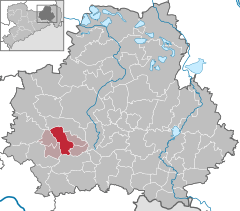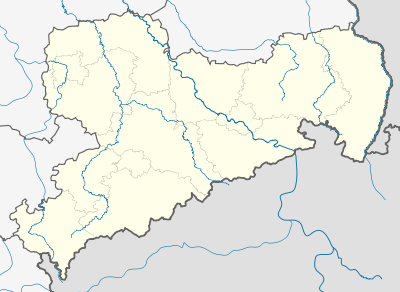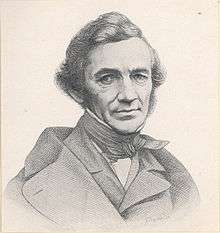Pulsnitz
Pulsnitz (German: [ˈpʊls.nɪt͡s] (![]()
Pulsnitz | |
|---|---|
 New Palace in Pulsnitz | |
 Coat of arms | |
Location of Pulsnitz within Bautzen district   | |
 Pulsnitz  Pulsnitz | |
| Coordinates: 51°10′54″N 14°0′47″E | |
| Country | Germany |
| State | Saxony |
| District | Bautzen |
| Municipal assoc. | Pulsnitz |
| Subdivisions | 5 |
| Government | |
| • Mayor | Barbara Lüke (Ind.) |
| Area | |
| • Total | 26.72 km2 (10.32 sq mi) |
| Elevation | 290 m (950 ft) |
| Population (2018-12-31)[1] | |
| • Total | 7,467 |
| • Density | 280/km2 (720/sq mi) |
| Time zone | CET/CEST (UTC+1/+2) |
| Postal codes | 01896 |
| Dialling codes | 035955 |
| Vehicle registration | BZ |
| Website | www.pulsnitz.de |
Pulsnitz became famous for its Pfefferkuchen, a type of Christmas cookie, when in 1558 the bakers of Pulsnitz received permission to bake them. Today there are still eight Pfefferküchlereien bakeries. In 1745 the Pfefferküchler Tobias Thomas was known to be practising his craft in Pulsnitz as well as in Thorn, Prussia now Toruń, Poland, where the famous Thorner Kathrinchen were made. Pulsnitz is informally known as Pfefferkuchenstadt meaning "Gingerbread Town".
The first Protestant missionary to arrive in India, Bartholomäus Ziegenbalg was born in Pulsnitz on July 10, 1682.[2]
Gallery
 Town hall
Town hall Memorial for Ernst Rietschel
Memorial for Ernst Rietschel Pulsnitzer Spitzen
Pulsnitzer Spitzen- Pulsnitzer Pfefferkuchen
 Post milestone from 1731
Post milestone from 1731
Sons and daughters of the city

- Bartholomäus Ziegenbalg (1682-1719), first Protestant missionary and Indian linguist
- Ernst Rietschel, one of the most important sculptors of his time
- Julius Kühn, an important agricultural scientist, he founded the first agricultural institute to be taken seriously at a German university
- Curt Haase, politician (NSDAP)
- Klaus Staeck, graphic artist
- Linda Wenzel
References
- "Bevölkerung des Freistaates Sachsen jeweils am Monatsende ausgewählter Berichtsmonate nach Gemeinden" (PDF). Statistisches Landesamt des Freistaates Sachsen (in German). July 2019.
- Bautz.de
External links
- (in German) Official website